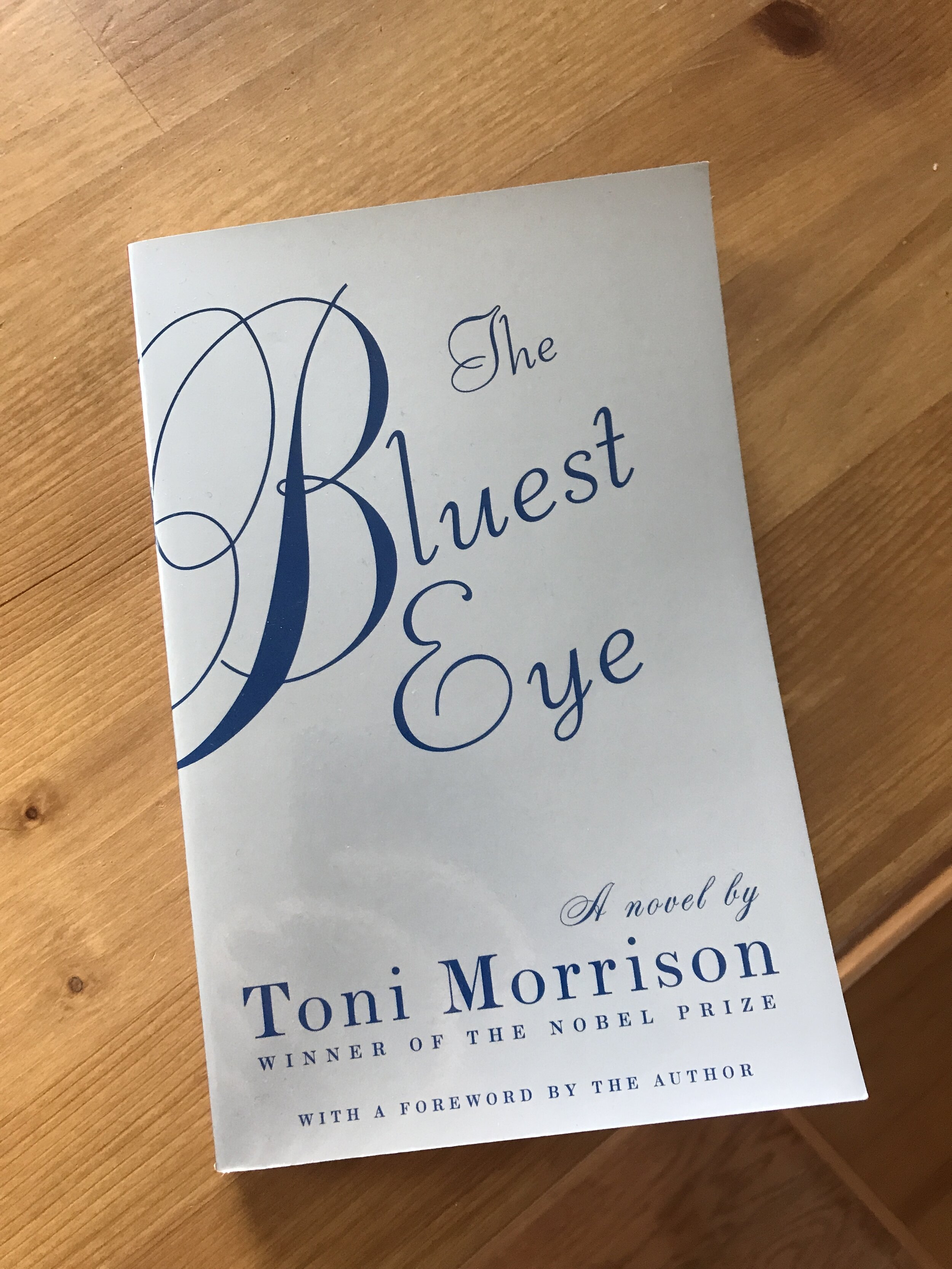Fiction Friday: THE BLUEST EYE
Toni Morrison passed away a year and two days ago, and I remember the tributes and sentiments for her, a literary powerhouse, Nobel Prize Winner, and influencer of late-20th century literature.
Yet I had never read Toni Morrison. My quite-white canon literature classes never included her, I never read her on my own, and I knew very little about her. So when the Black Lives Matter movement came into the forefront in June, and when I decided to devote my summer to reading black authors, I knew I wanted to include Toni Morrison on the list.
Then I watched the documentary PBS American Masters made about her. It not only covered her life (in addition to being a writer, she was the first black female editor at Random House who helped get writers of color published, and increased diversity on the publisher’s list), but also covered her work, and the themes and impact of her work. I knew I wanted to be exposed to her greatness, and I remember thinking I want to read all of these novels now!
I finished The Bluest Eye last night, and when I set it down, I said, “That was a book.” And here’s why.
The summary on the back — “Pecola Breedlove, a young black girl…yearns for the blond hair and blue eyes that she believe will allow her to finally fit in” — and the line on the first page, where Claudia, the narrator, explains that “We thought, at the time, that it was because Pecola was having her father’s baby that the marigolds did not grow,” are the plot, yes, but embody very little of this book.
Instead, The Bluest Eye features a whole universe woven around Pecola, with non-linear narrative, modernist storytelling, first person and omniscient points of view, and a dive into deep themes and symbolism from the very opening Dick and Jane passage. Almost from the first page I was like, “Oh yes, she’s a great writer, and I’m on board.”
The Bluest Eye isn’t just a telling of Pecola’s story — which is really just a slice of the novel — but of the beauty, humanity, and corruption in the people around her. There were modernist elements to it of telling the story by telling all the stories around the story: Claudia and her sister’s childhood exploits, and the intrusion of Mr. Henry; the bittersweet story of Pecola’s mother; the tragic story of her father; the story of the furniture in their house; the story of Junior’s mother’s cat; the lively conversations of the town’s prostitues. Each of these stories butts up again Pecola’s as explanation, as connection, and as slight to the young girl.
In fact, while the narrative is about Pecola, her story is only revealed tangentially in comparison to others. It’s told in peripheral vision, it’s told slant. But that’s the intention: This girl has been pushed to the side, has been the victim of microaggression after microaggression, is the victim of the fallen character in others, is both the object of hate and the scapegoat. Her corrupted innocence is simply, terribly the next in a line of corrupted innocence.
Through the telling of the stories of these characters come themes of beauty and the perception of beauty, the nuances of racism and classism, the bittersweetness of lost dreams, generational trauma, the delicate balance of childhood innocence, and how we can so very easily let a small, delicate life go unnoticed and get trampled beneath our feet.
One of the pervasive symbols is the marigolds that never took root, and never grew and flourished due to the nature of the environment at the time — of course a representation of Pecola. Another symbol that I found fascinating was the application of the phrase “The Maginot Line” to a person, which conjures up all sorts of themes of boundaries, borders, and fortifications that can be easily bypassed — a symbol that could be applied to nearly everyone involved, with their tightly-constructed views of life that can easily fall apart. And of course, the greatest symbol of the “bluest eye” is a desire, and then a delusion, that Pecola both grasps and doesn’t.
I’m for sure ready for my next Toni Morrison.
Go pick up a copy if you haven’t read it already from your local independent bookstore, or from Bookshop.org.
